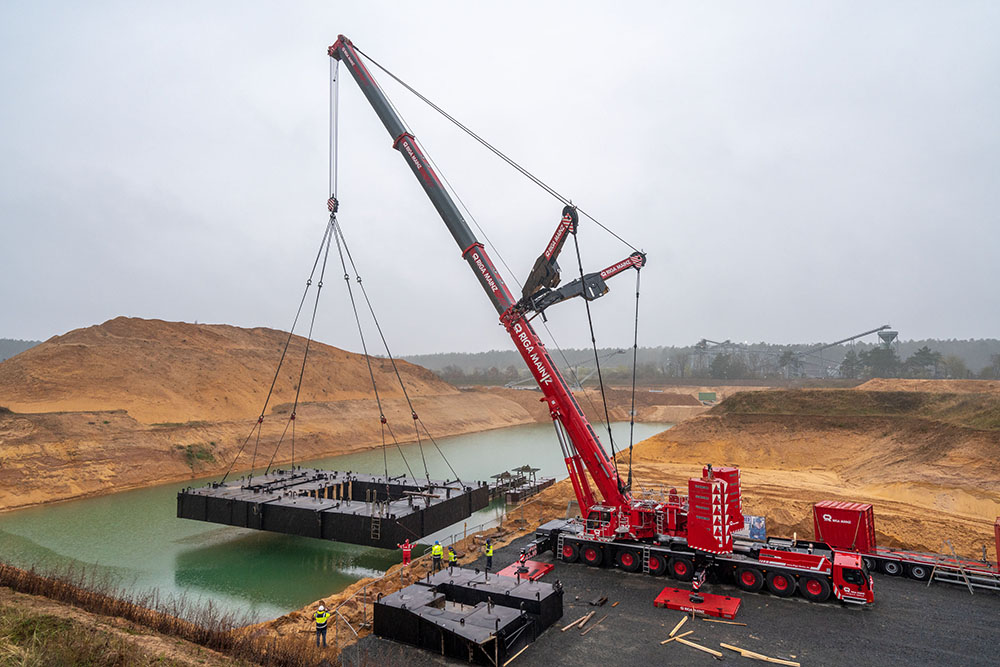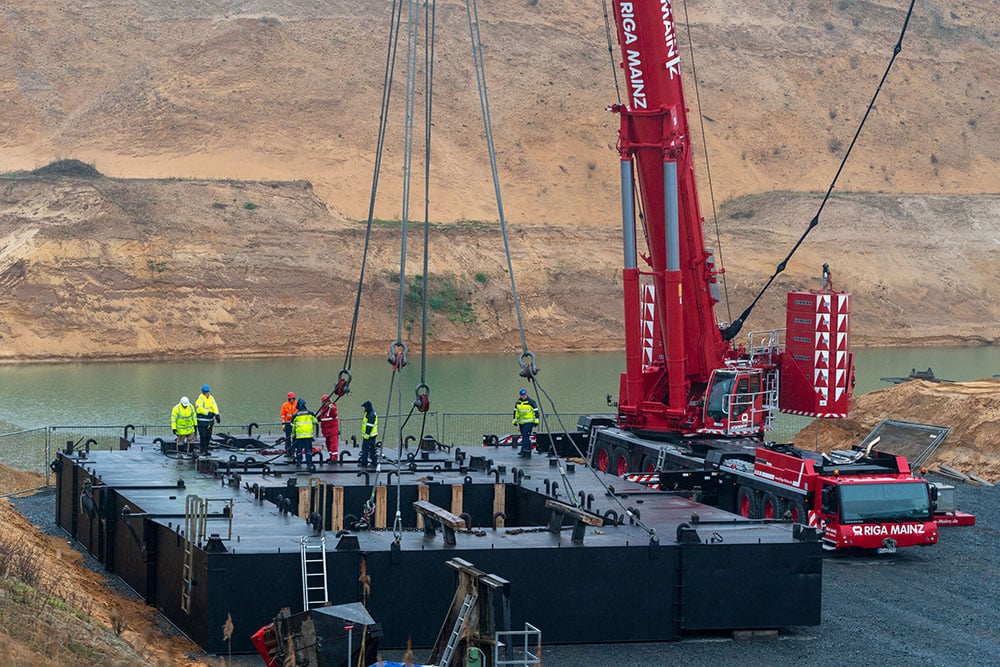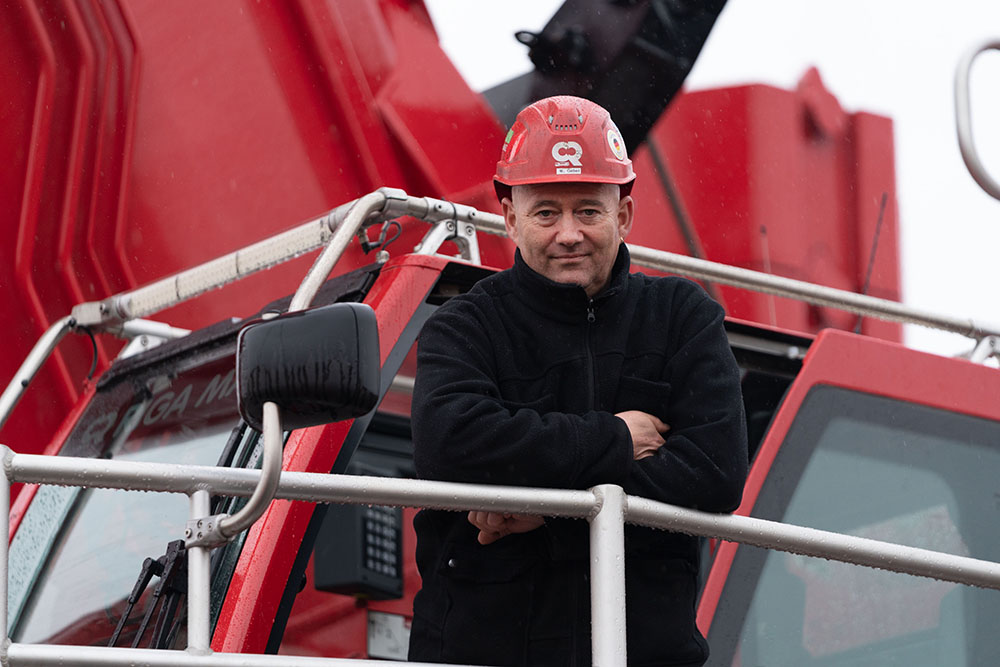A large pontoon was positioned on a flooded gravel pit as part of the process of expanding a gravel plant in Babenhausen in the German state of Hesse. Crane and heavy haulage contractor Riga Mainz had been awarded this order. The Mainz-based crane experts sent what is currently their largest mobile crane, a Liebherr LTM 1650-8.1, to carry out the job around 30 kilometers south-east of Frankfurt in Main.

To access a new extraction area for gravel and sand, a pontoon measuring over 20 meters in length had to be positioned in a newly flooded gravel pit. The powerful LTM 1650-8.1 mobile crane had already had the floating pontoon on its hook once before in December last year. At that time, it had been removed from a lake several kilometers away from the current location, whose mineral contents had been removed in full.
For positioning the pontoon at the end of March, crane operator Werner Gebel had set up his modern 8- axle machine parallel to the massive load with the lake at its rear.
“The crane naturally delivers very high lifting capacity values at the rear. That is particularly the case if I extend the outriggers fully using the VarioBase program,”
explained Werner Gebel.
In this mode, the LICCON crane control system calculates the maximum lifting capacity for every boom position. The maximum values are achieved when the crane is operated over its rear outriggers.
In Babenhausen, the challenge for the mobile was to position a gross load of around 70 tonnes into the water at a radius of 25 meters. To achieve this hoist, the LTM 1650-8.1 had been set up with its full slewing platform ballast of 155 tonnes. To enable the pontoon to be hoisted fully over the surface of the water, the hydraulically adjustable ballast radius was increased from 7.40 meters when it picked up the load to the maximum distance of 8.40 meters. Over the next few weeks, a large gravel excavator will be installed on the steel platform.

different lengths. Complicated calculations were required in advance for this purpose.
The LTM 1650-8.1 demonstrate what is currently feasible
“To attach the large load, we had to work with rope pulleys and fastening equipment of different lengths due to the fact that the center of gravity was far from central. First of all, however, we had to calculate the load case for the hoists using the material thicknesses of the floating section as 2/5 there were no precise data available about the weight of the pontoon. That then enabled us to develop our hoisting concept. In addition, as a result of how close the crane set-up area was to the edge of the embankment, we had to carry out geological studies of the subsoil. We had to ensure that the ground pressure under the load distribution mats would not cause the soil to collapse,”
explains Riga Mainz Managing Director Uwe Langer, who planned the crane job at the flooded gravel pit in minute detail.

His company working out of Mainz has a 120-strong workforce running 40 mobile and crawler cranes and, in addition to crane work, also tackles heavy haulage, special transport, and industrial installation work throughout Germany. The LTM 1650-8.1 has been the powerful flagship of Langer’s fleet for the last year.
“This crane enables Liebherr to show what is technically feasible today and with the LICCON work planner, the company also provides a tool to make these possibilities into reality. The crane continually proves to us that it always has another ace up its sleeve,”
continues the expert.


 Copyright 2017-2025 All rights reserved.
Copyright 2017-2025 All rights reserved.